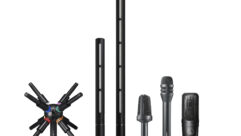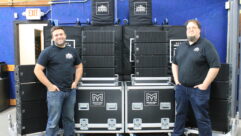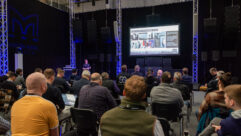Audio Remains a Hot Topic in Churches Large and Small
Apr 6, 2006 8:00 AM
From basic, entry-level speech reinforcement to high-end, concert-quality sound systems in huge venues, churches of all sizes all over the country continue to invest money in new and better audio systems. Despite a long-running expansion of spending on audio, the market continues strong, says Doug Gould of Shure, adding, “It’s not slowing down by any stretch.”
Declining prices and expanding capabilities have combined to create and sustain this boom in audio installations and upgrades in houses of worship. Gould notes that some tools that used to be complex and expensive, like digital mixers, have become so economical and so much easier to operate that they are attracting large numbers of church buyers.
Audio and acoustics expert Bill Schuermann agrees. “The systems we are designing today have fewer components, are easier to operate, and have an open architecture because so much is based in a central digital signal processor,” he says. “Think of it, a primary system now means the church has a digital console, central DSP, and powered loudspeakers. Three main components to achieve what formerly required racks filled with stuff and an operator who had some idea of how to operate everything. Today, fewer components can deliver better long-term performance.”
Gould thinks small-footprint digital mixers are becoming so common in church settings largely because the latest generation of these devices delivers so much flexibility and ease of use. A single compact system can replace racks of processors and other components, and one knowledgeable church staff member can program everything necessary so that a volunteer operator can run a worship service by pushing a few buttons on cue.
A similar trend is occurring with wireless systems, Gould says. Setting up a wireless mic system was very complex and error-prone just a couple of years ago, but today multi-frequency wireless systems virtually set themselves up.
“Digital audio networks are becoming a big thing,” Gould says, adding that these networks don’t require the heavy-duty conduit of older systems, often relying on simple Cat-5 cable instead.
Despite the greater simplicity of new systems, training remains a high priority for manufacturers and church users alike, Gould says. “So many people who don’t have experience in running an audio system are running them now,” he says. Technology is doing part of the job, he adds, but not all of it. Getting the most from these high-capability systems requires more than a skin-deep familiarity with their features.
Schuermann also sees more importance attaching to trained staff. “Most of the churches we deal with, either new construction or upgrades, have become more sophisticated in their taste, hearing, and expectations,” he says. ”However, their budgets have yet to catch up.
“Today, every church is expected to have a good audio system, but the churches who are constantly seeking new congregant members are the same churches that successfully blend their use of technology into the worship experience. The better the worship experience, the higher the worshippers’ return rate. More members mean more ministries, outreach, and growth. The only way to meet a church’s technological vision is with a properly engineered infrastructure and systems that are adaptive, and with a competent technical ministries staff to support the message.”










